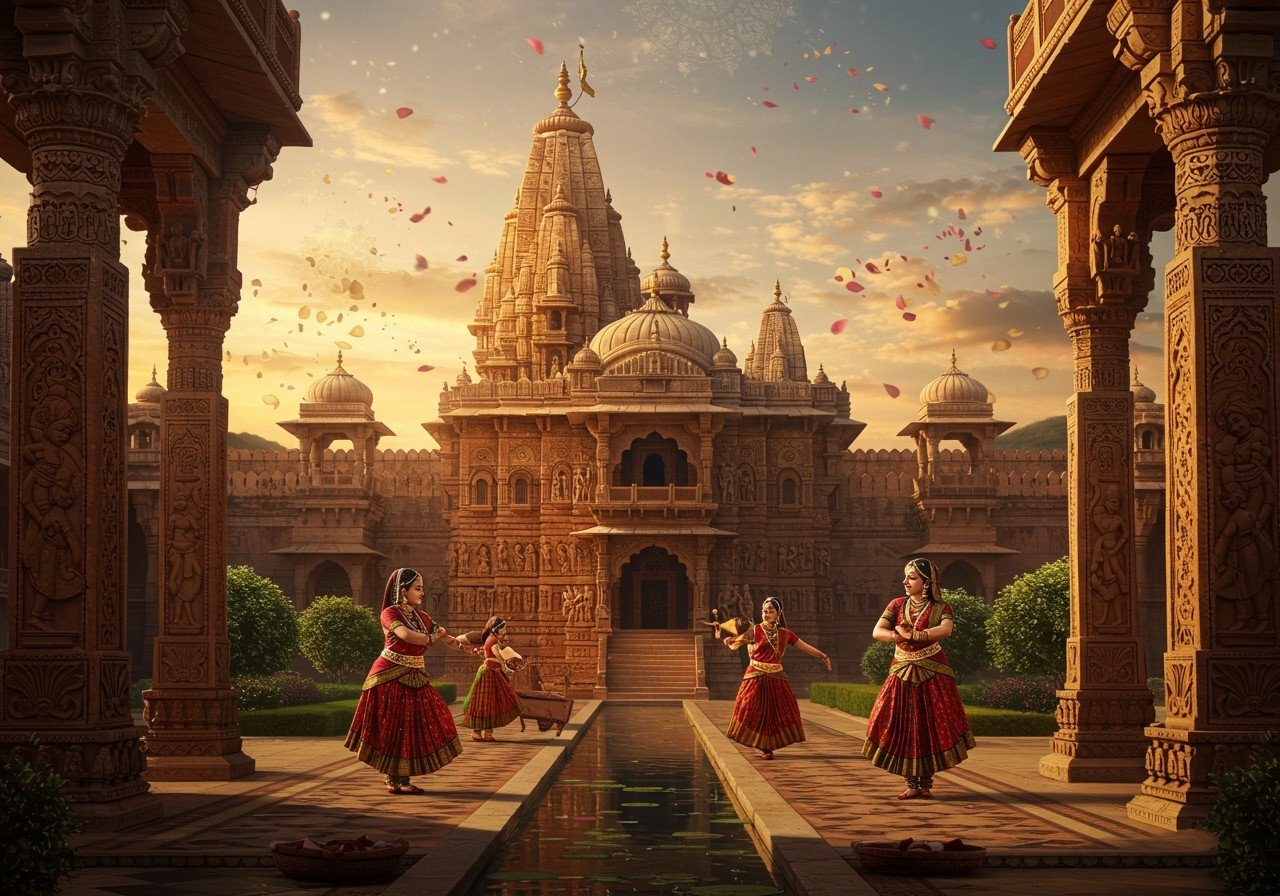
The Gurjara-Pratihara Dynasty, flourishing between the 6th and 11th centuries, significantly shaped Indian art, architecture, and culture. This dynasty, with prominent rulers like Mihir Bhoj, left a legacy of magnificent temples, intricate sculptures (like the Viswaroopa form of Vishnu and the Marriage of Siva and Parvati from Kannauj), and impactful literary works. This exploration delves into the artistic and architectural marvels, along with the cultural significance of the Gurjara-Pratihara Dynasty.
Historical Overview
Emerging in the early 6th century, the Gurjara-Pratihara Dynasty rose to prominence in northern and central India. Their reign involved both conflicts and alliances with neighboring kingdoms, such as the Rashtrakutas and Palas. The socio-economic environment under their rule fostered artistic and architectural growth. Royal patronage played a vital role in nurturing literature and scholarly pursuits, leading to significant cultural advancements. Notable rulers like Mihir Bhoj and Nagabhata II (information as of 2024) greatly contributed to the dynasty’s enduring legacy.
Art and Architecture of the Gurjara-Pratihara Dynasty
Gurjara-Pratihara art and architecture are renowned for their distinctive qualities. Their temples, often constructed using sandstone and other locally sourced materials, showcase intricate carvings and sculptures. Exemplary structures include the Teli ka Mandir, Sasbahu Temple in Gwalior, ancient temples near Nareshwar village in Gwalior, Bateshwar Hindu Temple in Morena district, and Mahadeva Temple in Amrol Village. (information as of 2025) These architectural wonders influenced later Indian temple architecture with their multi-storied designs and elaborate entrances. Religious and cultural themes, particularly depictions of Hindu deities, were prominent in their artistic expressions.
Key Temples of the Gurjara-Pratihara Dynasty
Several significant Gurjara-Pratihara temples warrant closer examination:
- Teli ka Mandir: This temple displays a captivating fusion of Dravidian and Nagara architectural styles.
- Sasbahu Temple: Known for its intricate carvings and rich iconography, this temple stands as a testament to the dynasty’s artistic prowess.
These sacred spaces served as hubs for religious practices and rituals. Modern preservation initiatives play a crucial role in safeguarding these historical treasures for future generations.
Literary Contributions
The Gurjara-Pratihara Dynasty also made significant literary contributions. Royal patronage fueled the development of literature and scholarly works. Poets and scholars flourished under their rule, producing works encompassing diverse themes like religion, poetry, and philosophy. This literary output influenced subsequent literary traditions in India, with significant works from this era continuing to be studied today.
Cultural Practices and Traditions
Deeply rooted in Hindu beliefs and rituals, the cultural practices of the Gurjara-Pratihara Dynasty emphasized festivals and ceremonies. Social and familial structures were well-defined within their society.
Frequently Asked Questions
What were the socio-economic conditions under the Pratiharas? The socio-economic conditions during the Gurjara-Pratihara reign were generally prosperous, facilitating artistic, architectural, and literary advancements.
What were the key religious practices of the Gurjara-Pratihara Dynasty? Hinduism was the dominant religion, with elaborate rituals and ceremonies playing a central role in their cultural life.
Poojn.in: Connecting You to Cultural Heritage
Poojn.in, India’s leading online store for cultural and religious goods, offers a wide selection of products to help you connect with the rich heritage of the Gurjara-Pratihara Dynasty. We provide:
- Brass and Copper Items: Discover traditional items reflecting the metalwork artistry of the era. Explore our brass collection.
- Puja Samagri: Find authentic puja items crafted from materials like sandalwood and kumkum, reminiscent of those used in ancient times. Browse our puja essentials.
- Sculptures and Murtis: Explore a range of meticulously crafted sculptures and murtis depicting Hindu deities, similar to those found in Gurjara-Pratihara temples. View our sculpture collection.
Visit Poojn.in today to explore our complete collection and enrich your connection to India’s vibrant cultural heritage.
Conclusion
The Gurjara-Pratihara Dynasty’s legacy in art, architecture, and culture is truly remarkable. Their temples, intricate sculptures, and literary achievements continue to inspire. By studying and preserving their heritage, we honor the past and ensure these traditions endure. Platforms like Poojn.in provide a valuable resource for connecting with and maintaining these traditions in the modern world.


